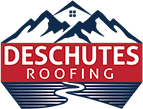A commercial roof is a critical asset that shields your business premises from the elements, supports energy efficiency, and contributes to the overall structural integrity of your building. In Springfield, OR, where the weather can range from heavy rainfall to intense sunlight, proper maintenance, and strategic care are essential for extending the lifespan of your commercial roof. This comprehensive guide will provide you with detailed insights into maintaining, repairing, and upgrading your commercial roof to ensure its durability and functionality.

Understanding Your Commercial Roof System
Types of Commercial Roofs
Understanding the different types of commercial roofs and their specific needs is crucial for effective maintenance. In Springfield, the most common types include:
- Flat Roofs: These roofs are favored for their simplicity and cost-effectiveness. Common materials used for flat roofs include EPDM (ethylene propylene diene monomer), TPO (thermoplastic olefin), and PVC (polyvinyl chloride). Flat roofs require diligent maintenance to prevent pooling water, which can lead to leaks and structural damage.
- Metal Roofs: Metal roofs, such as standing seam, corrugated metal, and metal shingles, are known for their durability and long lifespan. They are particularly effective in reflecting sunlight and reducing heat absorption. However, they can be susceptible to expansion and contraction issues due to temperature changes, which may require periodic maintenance.
- Modified Bitumen Roofs: Modified bitumen is an asphalt-based material that offers enhanced waterproofing and durability. This type of flat roof is known for its resistance to UV radiation and its ability to handle harsh weather conditions. Regular inspections are needed to address any cracks or seams that may develop.
- Built-Up Roofs (BUR): BUR systems consist of multiple layers of bitumen and reinforcing fabric. They are known for their robustness and ability to withstand heavy foot traffic and severe weather conditions. Maintenance for BURs involves checking the seams and surface for signs of wear and tear.
Roof Components and Their Importance
A commercial roof consists of various components that work together to provide protection and support. Understanding these components and their functions is essential for effective maintenance:
- Decking: The base layer of the roof, typically made of plywood or metal, supports the roofing material. Ensuring the decking is in good condition is vital for overall roof stability.
- Underlayment: This layer provides additional protection against water infiltration. Common materials include felt or synthetic underlayment.
- Roofing Membrane: The primary waterproofing layer, which can be made of materials like EPDM, TPO, PVC, or modified bitumen. Regular inspection and maintenance of the membrane are crucial for preventing leaks.
- Flashing: Metal or rubber components installed around roof penetrations, such as vents and chimneys, to prevent water from seeping in. Properly sealed flashing is essential for leak prevention.
- Drains and Gutters: These components channel water away from the roof. Regular cleaning and inspection are necessary to ensure they are functioning correctly.
Routine Maintenance Services: Key to Longevity
Regular Roof Inspections
Conducting regular inspections is one of the most effective ways to extend the lifespan of your commercial roof. In Springfield, where weather conditions can vary, it’s essential to:
- Schedule Semi-Annual Inspections: Arrange for professional inspections at least twice a year—once in the spring and once in the fall. These inspections should include a thorough examination of all roof components, including the membrane, flashing, and drains.
- Inspect After Severe Weather: After storms or severe weather events, inspect your roof for damage. High winds, hail, and heavy rainfall can cause significant issues that require prompt attention.
- DIY Inspections: While professional inspections are crucial, you can perform basic DIY inspections to identify visible issues such as debris accumulation, damaged shingles, or pooling water.
Roof Cleaning and Roof Debris Removal
Maintaining a clean roof is essential for preventing damage and extending its lifespan. In Springfield, where seasonal changes can bring significant debris, follow these practices:
- Gutter and Downspout Cleaning: Regularly clean gutters and downspouts to prevent clogs that can lead to water backup and roof damage. Clear out leaves, twigs, and other debris to ensure proper drainage.
- Debris Removal from Roof Surface: For flat roofs, use a broom or blower to remove leaves, branches, and other debris. Accumulated debris can trap moisture and accelerate roof deterioration.
- Check for Algae and Moss Growth: In humid conditions, algae and moss can grow on roofing materials. Use appropriate cleaning solutions and methods to remove these growths, as they can cause damage and affect roof performance.
Addressing Small Roof Issues Before They Escalate
Small roofing problems, if left unattended, can quickly escalate into more significant issues. Here’s how to address minor problems:
- Minor Cracks and Blisters: For flat roofs, use roofing sealant or patching materials to repair small cracks and blisters. Address these issues promptly to prevent water infiltration and further damage.
- Loose or Damaged Flashing: Check for loose or damaged flashing around roof penetrations. Re-secure or replace flashing as needed to ensure a watertight seal.
- Punctures and Tears: Inspect the roofing membrane for any punctures or tears. Minor damages can be patched with appropriate materials, but significant damage may require professional repair.
Timely Repairs: Preventative Maintenance Measures
Addressing Leaks Promptly
Leaks can lead to extensive damage if not addressed immediately. To handle leaks effectively:
- Identify the Source: Locate the source of the leak, which may be due to damaged shingles, faulty flashing, or a compromised membrane. A professional roofing contractor can assist with accurate leak detection.
- Temporary Repairs: If you notice a leak before professional help arrives, use a temporary patch or cover to minimize water intrusion. This may include using a tarp or roofing adhesive.
- Professional Repairs: Once the source is identified, have a professional roofer perform permanent repairs. They will have the expertise and tools to fix the issue correctly and prevent future leaks.
Replacing Worn or Damaged Roofing Materials
Over time, roofing materials can become worn or damaged. Replace these materials to maintain roof integrity:
- Shingles: For shingle roofs, replace cracked, missing, or damaged shingles. Ensure that new shingles match the existing ones to maintain the roof’s appearance and functionality.
- Roofing Membrane: For flat roofs, inspect the membrane for signs of wear, such as cracks or tears. Replace sections of the membrane as needed to prevent leaks and ensure proper waterproofing.
- Flashing: Replace any damaged or rusted flashing. Properly installed and sealed flashing is crucial for preventing water intrusion around roof penetrations.
Upgrades and Enhancements
Insulating Your Roof
Proper insulation can significantly impact your roof’s lifespan and overall building performance. In Springfield, effective insulation can:
- Reduce Thermal Stress: Insulation helps maintain a consistent internal temperature, reducing the strain on roofing materials caused by temperature fluctuations.
- Improve Energy Efficiency: Proper insulation can lead to reduced heating and cooling costs by improving the building’s energy efficiency.
- Types of Insulation: Options include spray foam, fiberglass batt, and rigid board insulation. Choose the type that best fits your roofing system and budget.
Applying Roof Coatings
Roof coatings can provide an additional layer of protection and enhance the performance of your commercial roof:
- Reflective Coatings: Apply reflective coatings to reduce UV radiation absorption and lower roof temperatures. This can help prevent thermal damage and improve energy efficiency.
- Waterproof Coatings: Use waterproof coatings to seal minor leaks and protect against water damage. These coatings can extend the lifespan of the roofing membrane and reduce maintenance needs.
- Professional Application: Have a professional apply roof coatings to ensure proper coverage and adhesion. Properly applied coatings can provide long-lasting protection.
Upgrading to Modern Materials
If your roof is approaching the end of its lifespan, consider upgrading to modern materials that offer enhanced durability and performance:
- TPO or PVC Roofs: These materials offer excellent resistance to UV rays and weather conditions. They are known for their durability and low maintenance requirements.
- Metal Roofing: Metal roofs provide superior longevity and resistance to extreme weather conditions. Consider upgrading to a metal roofing system for enhanced durability and energy efficiency.
- Cool Roof Technology: Explore cool roof options that reflect more sunlight and absorb less heat, improving energy efficiency and reducing cooling costs.
Hiring Professional Services
Importance of Professional Roofing Contractors
Professional roofing contractors play a crucial role in maintaining and extending the lifespan of your commercial roof. When selecting a contractor in Springfield, consider the following:
- Experience and Reputation: Choose a contractor with a proven track record and positive reviews. Experienced professionals are more likely to provide high-quality workmanship and reliable service.
- Licensing and Insurance: Ensure that the contractor is licensed and insured. This protects you from potential liabilities and ensures that the contractor meets industry standards.
- Warranty and Guarantees: Look for contractors who offer warranties on their work and the materials used. A warranty provides added assurance that any issues will be addressed promptly.
Regular Professional Maintenance Services
In addition to routine inspections, professional maintenance services can provide comprehensive care for your commercial roof:
- Detailed Inspections: Professional inspectors can conduct thorough examinations to identify potential issues that may not be visible during a basic inspection.
- Preventative Maintenance: Schedule regular maintenance visits to address minor issues before they develop into major problems. Preventative maintenance can help extend your roof’s lifespan and reduce repair costs.
- Emergency Repairs: Choose a contractor who offers emergency repair services. Rapid response to urgent issues can minimize damage and prevent further complications.
Monitoring and Record-Keeping
Keeping Detailed Records
Maintaining detailed records of all roofing activities is essential for effective management and long-term planning:
- Inspection Reports: Document the findings of each inspection, including any issues identified and actions taken. This helps track the roof’s condition and ensures that necessary repairs are performed.
- Repair History: Record all repairs performed, including the materials used and the cost. This information is useful for tracking the roof’s maintenance history and planning future repairs.
- Maintenance Schedule: Keep a schedule of regular maintenance tasks, including cleaning, inspections, and any planned upgrades. Adhering to this schedule helps ensure that all necessary tasks are completed on time.
Monitoring Roof Performance
Regularly monitor your roof’s performance to identify any changes or issues:
- Signs of Wear and Tear: Look for visible signs of wear, such as cracks, sagging, or discoloration. Address any issues promptly to prevent further damage.
- Energy Efficiency: Assess whether your roof’s insulation and coatings are effectively contributing to energy savings. If you notice increased energy costs, it may be time to upgrade or repair your roofing system.
Conclusion
Extending the lifespan of your commercial roof in Springfield, OR, requires a proactive approach that includes regular maintenance, timely repairs, strategic upgrades, and professional services. By understanding your roof type, performing routine inspections, addressing minor issues promptly, and investing in modern materials and technologies, you can ensure that your roof remains in optimal condition for years to come.
A well-maintained roof not only protects your building and its occupants but also enhances energy efficiency and reduces overall maintenance costs. Working with experienced roofing professionals can provide you with the expertise and support needed to keep your commercial roof in excellent condition.
Investing in the longevity of your commercial roof is a wise decision that will pay off in the long run, ensuring the safety and functionality of your building while protecting your investment.
For the best results, consider partnering with a reputable roofing contractor who can provide tailored services and expert guidance. By prioritizing your roof’s maintenance and care, you are making a valuable investment in the future of your business.










